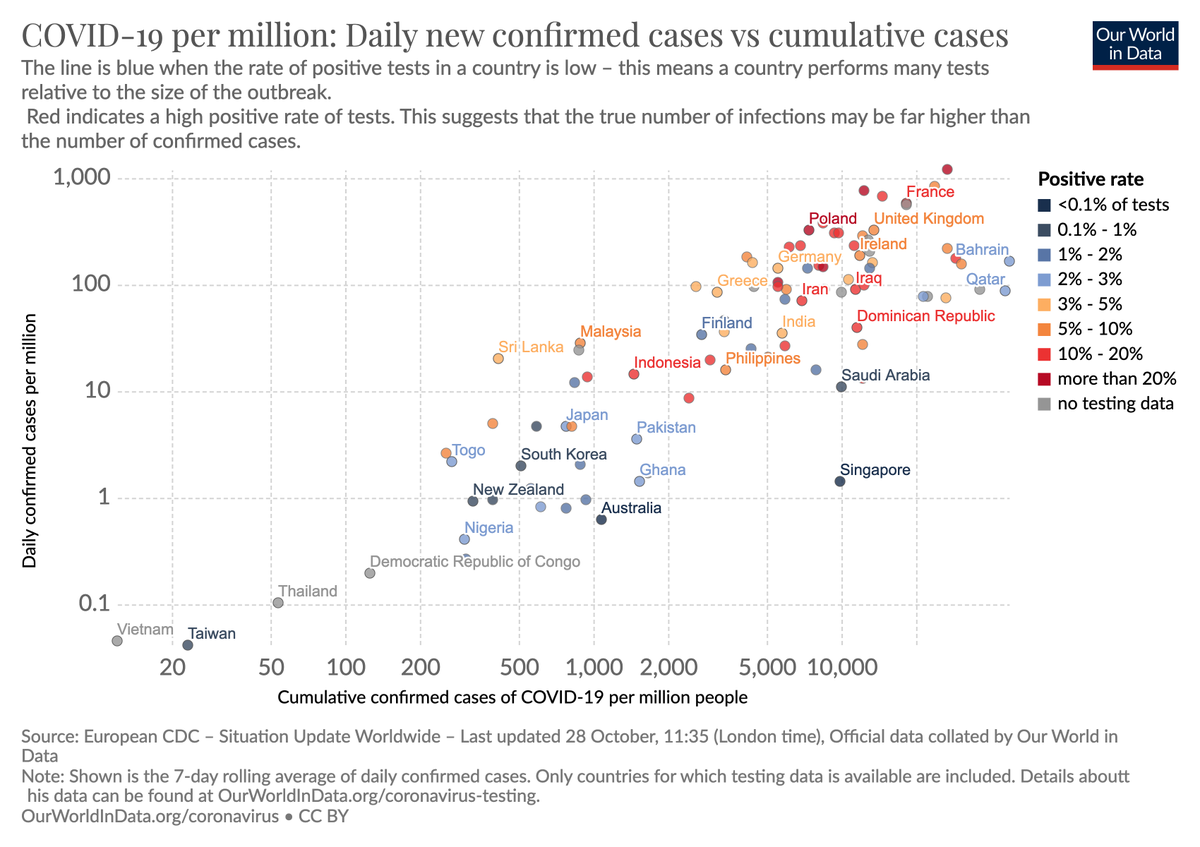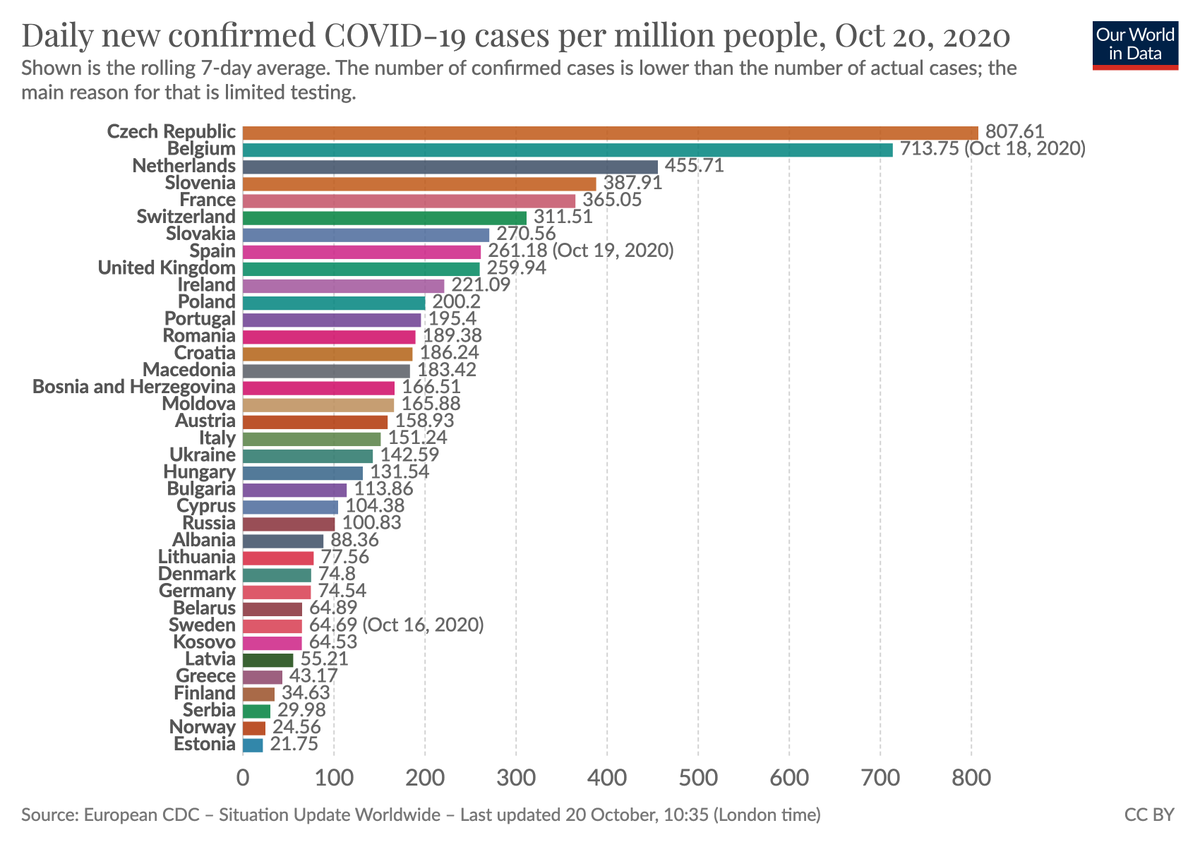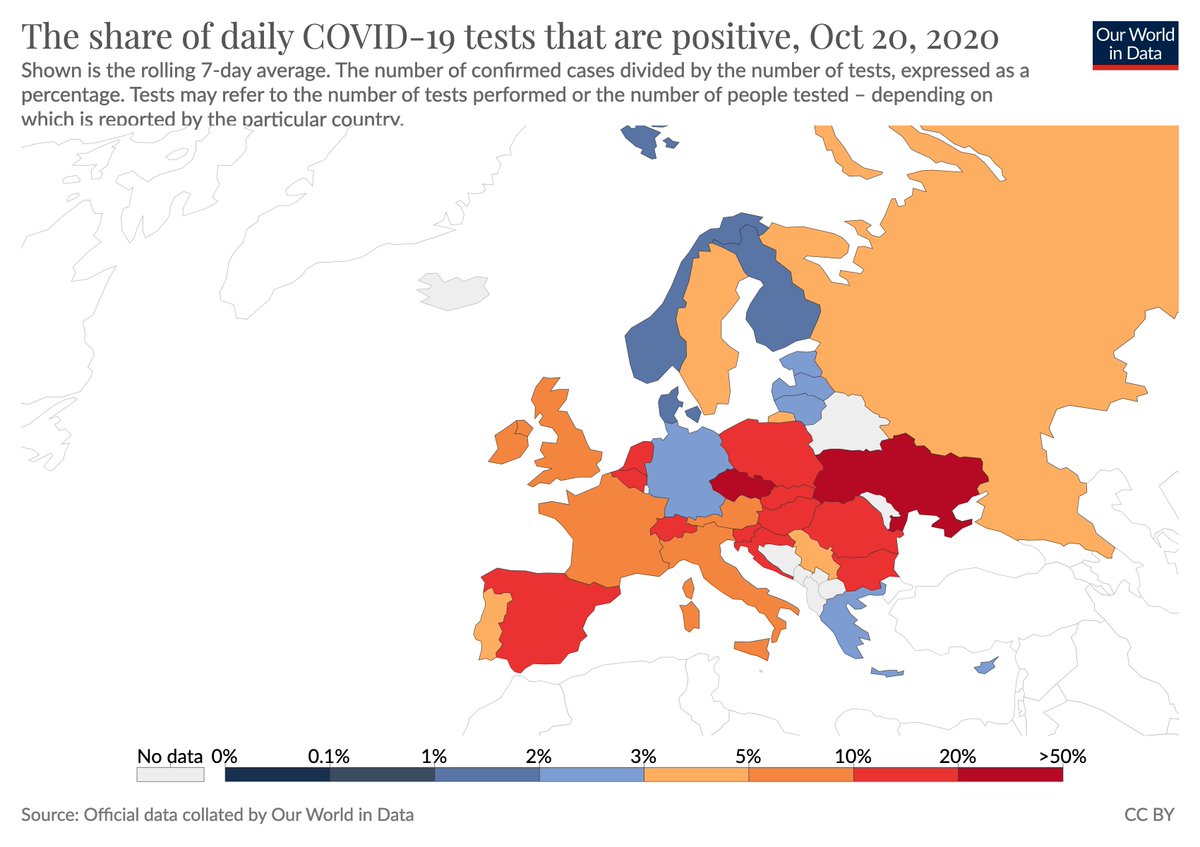
The European CDC will soon be switching to weekly data and I see several people concerned that this would create problems for Our World in Data and those who rely on data that they obtain via us.
This is not the case. We are well prepared.
Our data manager @redouad summarizes:
This is not the case. We are well prepared.
Our data manager @redouad summarizes:

What the ECDC was pulling off in the last months was really phenomenal.
Very early in the pandemic – when alternative data sources were often extremely bad – the colleagues there woke up at 4 o'clock every morning to bring together reliable data from countries around the world.
Very early in the pandemic – when alternative data sources were often extremely bad – the colleagues there woke up at 4 o'clock every morning to bring together reliable data from countries around the world.
We would definitely prefer if the ECDC would continue doing this work, but I very much understand that it needs to come to an end. And it can because there are good alternatives for case and death data available.
The problem is not so much that this instution stops providing key data for which alternatives exist.
The problem is that some other institutions never started providing key data.
We are 11 months into the pandemic and there is no one that brings together global data on
The problem is that some other institutions never started providing key data.
We are 11 months into the pandemic and there is no one that brings together global data on
… on key metrics like cases by age, deaths by age, or hospitalizations. Such data would be key to understanding the pandemic better.
(Also, our tiny team here are the only team maintaining global testing data.)
And unfortunately none of that seems to change.
(Also, our tiny team here are the only team maintaining global testing data.)
And unfortunately none of that seems to change.
• • •
Missing some Tweet in this thread? You can try to
force a refresh













